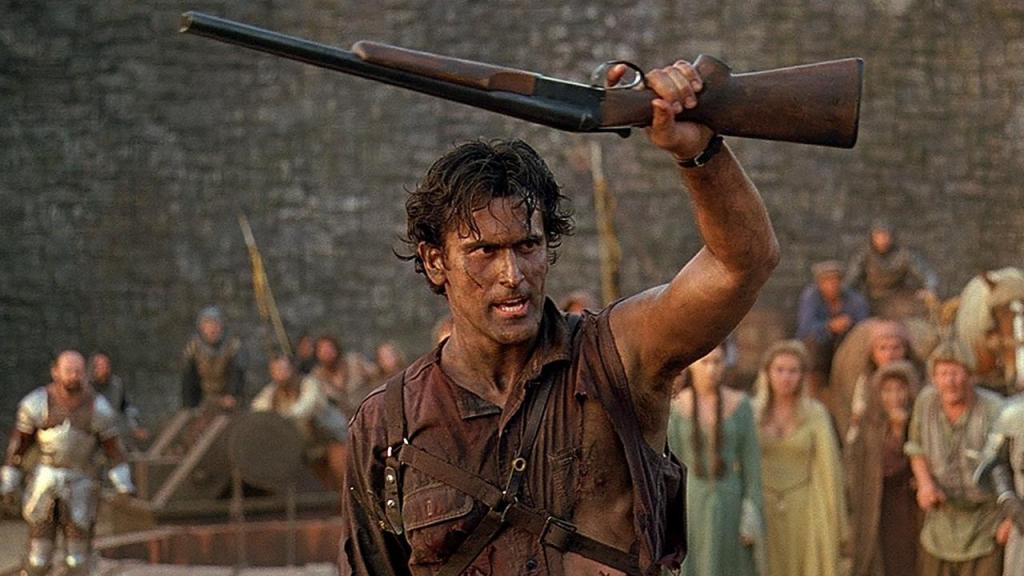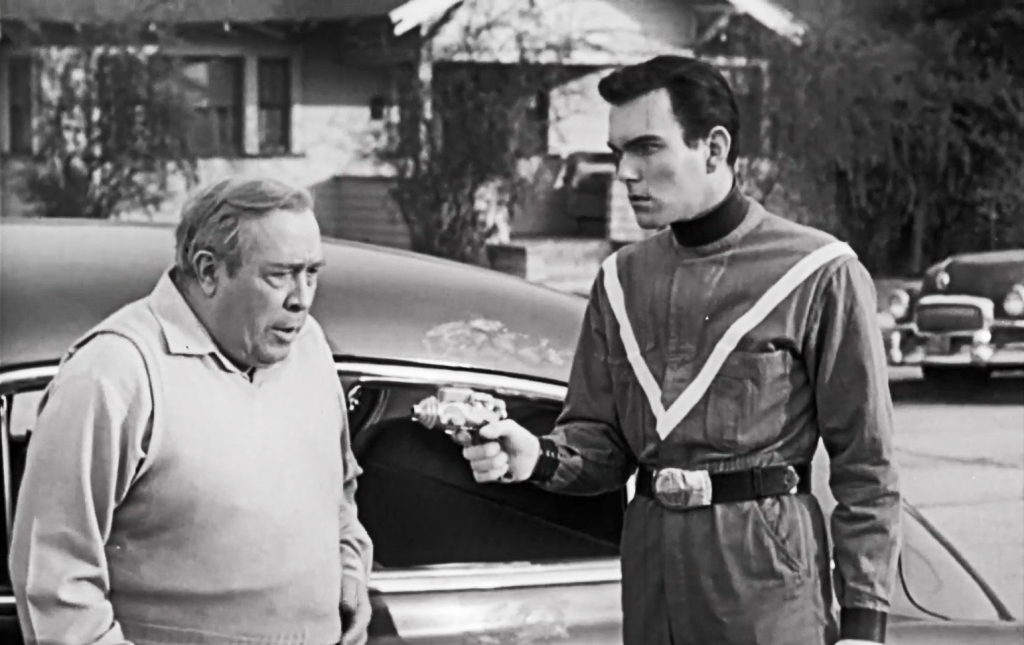Horror Comedy is an interesting blend of genres because it takes two complete opposites and meshes them together in a film that often supersedes the best in either individual category. There are plenty of duds out there. The same can be said any genre. When treated correctly, Horror Comedies can both frighten and make us laugh. Let’s take a look at some of these movies, shall we?

10. Ernest Scared Stupid
Let’s get this out of the way, the Ernest movies aren’t good movies. They’re funny to a very select group of people and nostalgic to a slightly larger group of people. Lucky for me, I’m in both groups. Ernest Scared Stupid follows the ever-lovable Ernest P. Worrell as he unwittingly releases an evil troll from his mystical prison. One by one, the troll wreaks havoc on the town and captures the town’s children, turning them into wooden dolls. Ernest pleads with the mayor and sheriff of the town that the troll must be stopped, but nobody in town believes him, except Old Lady Hackmore (Eartha Kitt). Together, they must stop the troll before he grows too powerful to be stopped.

9. Tucker & Dale vs. Evil
Subverting the Horror trope, Tucker and Dale are two good-hearted hillbillies who just purchased a rundown cabin in the woods. As they travel to the cabin to begin repairs to make it their ultimate summer dream home, their paths cross a group of college kids. Several misunderstandings occur that cause the college kids to fear for their lives around the hillbillies, but when one of the college kids is revealed to be more than they appear, can these misunderstandings be resolved before danger strikes? It’s nothing a little chamomile tea can’t fix.

8. Army of Darkness
By the third installment of the Evil Dead franchise, director Sam Raimi and star Bruce Campbell were leaning into the sheer goofiness they had created in the previous films. The result is one part time travel story, one part Three Stooges homage, and all parts groovy, baby. Thanks to the mysterious powers of the Necronomicon, Ash Williams is transported back into the Middle Ages just as an…army of darkness…arises. Equipped with his chainsaw arm and his “boomstick”, Ash will have to help the local king protect his kingdom and find a way back into the present day so he can get back to work at the S-Mart. Hail to the king, baby!

7. Scream
Okay, this is definitely the most horror-ish movie on the list, but it’s one of the few movies that can stand as a critique of the genre it loves as well as being an excellent entry into that genre. In the town of Woodsboro, a string of murders occur by a man in a mask, Ghostface. Ghostface shows no mercy and will kill you for simply getting a plot point of one of the Friday the 13th movies wrong. Not only do you need to be sharp on slasher film tropes, you also need to know the “rules of surviving a horror movie” if you’re going to make it through the night.

6. Shaun of the Dead
Shaun goes to sleep a hopeless, girlfriend-less loser, and wakes up the next morning in a zombie apocalypse, though he and his best friend, Ed, are slow to realize it. Armed with a shovel and a cricket bat (and briefly a record collection, though both men suffer from terrible aim), they must gather their friends and family and attempt to survive until the British Army can arrive. That means they have to fight, run over, and blend in with the zombies, often times to disastrous results. Despite the odds, Shaun is determined to survive…and prove to his ex that he can be somebody.

5. Zombieland
Columbus is traveling home to make sure his family has survived a zombie apocalypse, and he’s gotten this far due to a strict set of rules to surviving. On his way, he teams up with Tallahassee, a loose cannon who loves killing zombies almost as much as he loves Twinkies. They are joined by two con artist sisters, Wichita and Little Rock, who quickly trick them into giving up guns and their car as means to get to a theme park that is said to be “zombie-free”. The four travel toward this park together, making a quick stop at Bill Murray’s house, only to find it horribly infested with zombies.

4. Little Shop of Horrors
That’s some plant! Seymour (Rick Moranis) buys this intriguing plant one day and brings it to the flower shop where he works for some window decoration. The plant, which Seymour has named Audrey II (Levi Stubbs of The Four Tops) after his coworker, Audrey (Ellen Greene), whom he is secretly in love with. Audrey suffers from an inferiority complex and cannot leave her abusive dentist boyfriend, Orin (Steve Martin). Audrey II doesn’t respond to regular water and sunlight to grow. It needs blood, and luckily, Orin’s got more than enough. Seymour doesn’t kill Orin, but he does chop him up after the dentist accidentally kills himself on an overdose of laughing gas. Soon, Audrey II and Seymour are the talk of the town, but as far as blood and fame go, when will enough be enough?

3. Arsenic and Old Lace
Frank Capra was mostly known for his idealistic humanist films such as Mr. Smith Goes to Washington, Mr. Deeds Goes to Town, and It’s A Wonderful Life, but two years before that last one was released, Capra released Arsenic and Old Lace. The screwball comedy takes place on Halloween night, and Mortimer Brewster (Cary Grant) has just been married. He runs home to tell his aunties only to discover that his sweet, old aunties have a dead body in the window seat. From there, the film spirals out of control as Mortimer fends off his brothers, Teddy (who believes he’s the president with the same name) and Jonathan (who looks just like Boris Karloff), asylum doctors, the police, and his new bride. It’s such a mad-cap night that it even drives Mortimer a little insane.

2. Abbott and Costello Meet Frankenstein
The smartest thing Universal Studios ever did (besides attempting to franchise their monster movies, of course) was to take their two biggest money-makers of the 30s and 40s, and mash them together. Abbott and Costello, Chick and Wilbur, are postal workers tasked with transporting crates of artifacts for McDougal’s House of Horrors. Inside those crates are the supposed bodies of Count Dracula and Frankenstein’s monster. Chick doesn’t believe in any of that superstitious hocus pocus, but Wilbur…well, he’s a simple guy, and a perfect brain for the monster, or so the very-much-alive Dracula suspects. The only one who believes Wilbur is Larry Talbot, but he has his only hairy problems to deal with. What follows is a wild and hilarious ride through the Universal catalog of monsters.

1. Young Frankenstein
Parody is the sincerest form of flattery, or so someone says, I’m sure. Mel Brooks and Gene Wilder’s second collaboration of 1974 is a love letter to those Universal monster movies of yore, and a deep love it is. The attention to detail should be enough to recognize that. The whole hook of Young Frankenstein is “what if the descendant of the original Dr. Frankenstein wanted nothing to do with the family business?” Frederick Frankenstein (pronounced “Fronk-en-steen”) moves to Transylvania to see what he’s inherited. The descendent of his grandfather’s assistant, Igor (“Eye-gor”), is there to help him, along with Inga and Frau Blücher. Frankenstein slowly descends into madness and decides to pick up where his grandfather left off, determined to create not only a simple reanimated creature, but to make him a “man about town”. The townspeople have no love for the creature, so it’s up to the doctor to make them see his potential. You don’t have to be Abby Normal to find this movie hilarious.
























